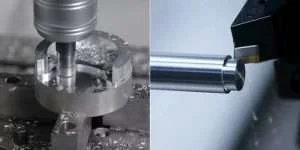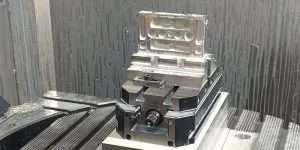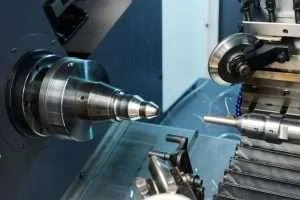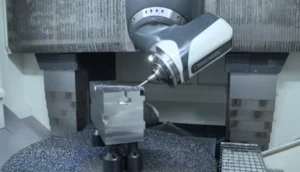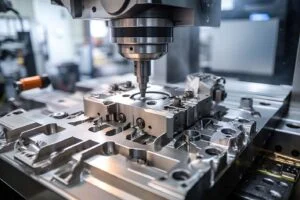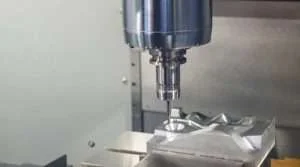CNC machining operations are known for their high precision and dimensional accuracy. This feature is mainly a result of the automation of these services through computer programs. However, there are different CNC machining processes, and not understanding the one that suits your machining needs may alter your manufacturing outcome.
Therefore, manufacturers must familiarize themselves with the different CNC techniques. Two of the most populous CNC machining operations include CNC turning and milling. While they are both CNC machining operations, they are distinct. This article explores the differences between CNC turning vs milling.
What is CNC Turning?
CNC turning is a popular operation for CNC machining and rapid prototyping services. The technique involves fixing the workpiece to a rotating chunk, which moves it against the cutting tools fixed to a turret. This results in removing pieces from the workpiece until the intended shape is achieved.
Turning is the go-to CNC process for creating rounded components, especially those in the form of cylinders and cones. Like all CNC processes, the machines for this operation – often with CNC lathes or turning centers – are controlled by computer codes and programs, ensuring precision machining.
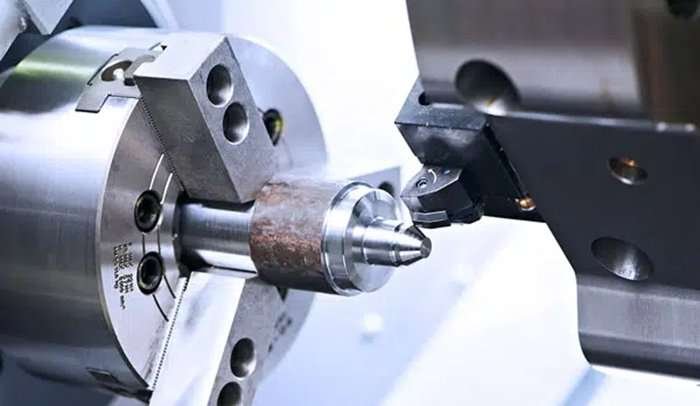
How CNC Turning Works?
CNC turning centers and lathes consist of a rotating chuck that holds the workpiece in place as it rotates against the series of multi-sized cutters attached to the turret. The machines are highly versatile, capable of cutting the exterior and even bore holes in a workpiece. Besides general CNC turning services, these machines suit other CNC operations, like drilling, grooving, facing, tapering, boring, threading, and knurling.
What is CNC Milling?
CNC milling processes are the most common CNC machining operation, mainly because of their high versatility and applications, which are superior to turning. The processes involve using CNC mills and milling centers to cut and reduce the size of a material till the desired shape is achieved.
The milling operations differ from turning in that the CNC mills hold the workpiece stationary while the milling cutting tools rotate around it, delivering quick and powerful cuts. This machining technique is suitable for face, plain, and angular milling, including drilling, engraving, tapering, and boring, and for creating more detailed features like undercuts and internal pockets.
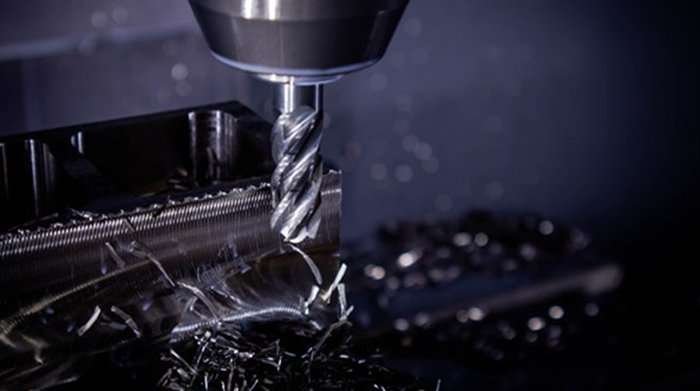
How CNC Milling Works?
The cutting process is controlled by computer codes as the series of cutters pass against the surface of the workpiece as the cutting teeth remove pieces from it. However, it is noteworthy that CNC mills, especially the multi-axis milling machines, may exist in different configurations; they include the 3, 4, 3+2, 5, and even 7-axis.
The standard 3-axis mills can cut across X, Y, and Z axes. On the other hand, the modern 5-axis adds two more cutting axes – A and B coordinates- empowering the machines to cut along five coordinates simultaneously. The higher the axis of the milling device, the more advanced and suitable the device is for creating complex geometries and intricate designs.
Differences Between CNC Turning vs Milling
From the definition of both machining processes, we can infer some of the differences, with the most important being their cutting method. In CNC turning, the workpiece rotates against the CNC cutting tools, while CNC milling uses rotating cutters to remove pieces of a stationary workpiece.
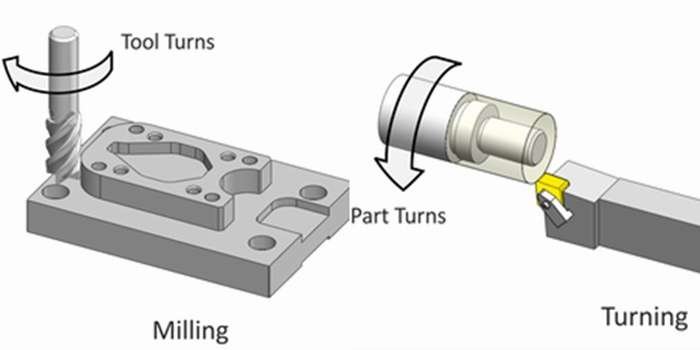
This variation in their machining techniques forms the basis of their differences. Below is an overview of the distinction between CNC milling vs turning.
- Cutting: In CNC turning, the workpiece maintains continuous contact between the workpiece and the cutters, ensuring continued cutting. On the other hand, CNC milling uses periodic cutting when the cutting edge makes contact with the workpiece.
- Tooling: CNC turning uses a single-point cutting tool, while milling uses multi-point cutters
- Cutting Chips: While CNC turning produces a mixture of continuous, discontinuous, and fragmented chips, CNC milling typically produces discontinuous chips.
- Feed Option: The tools in turning move along two axes – X and Y, while those in milling can simultaneously move in multiple directions, X, Y, Z, and even more, depending on the sophistication of the milling devices.
- Uses and Applications: CNC turning specializes in creating rounded conical and cylindrical structures, while milling creates flat, regular, irregular, and complicated structures.
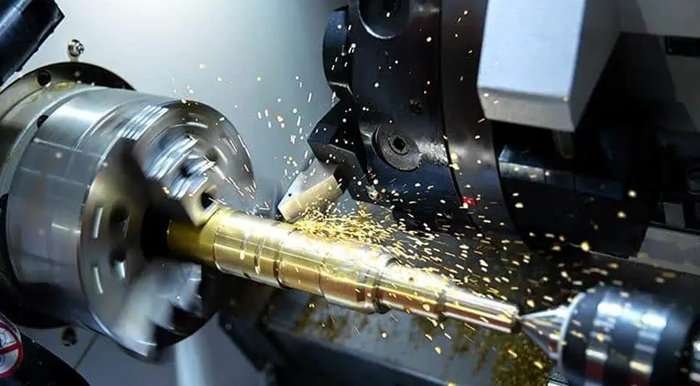
The table below gives a summary of the differences between CNC turning vs milling.
| Machining Features | CNC Turning | CNC Milling |
| Cutting | Continuous | Intermittent |
| Tooling | Single-point cutting tool | Multi-point cutting tool |
| Cutting chips | Continuous, discontinuous, and fragmented | Typically discontinuous |
| Feed option | X and Y axes | Multi-axis: X, Y, Z, A, and B coordinates |
| Uses and Applications | Creating round, cylindrical, and conical structures | Create flat, regular, and irregularly shaped structures, including parts with more complicated and complex geometries |
Comparing the Applications of CNC Turning vs Milling
CNC turning and CNC milling share some similarities in their uses and applications. Below, we will examine some of the applications of either machining processes – milling machine vs. lathes.
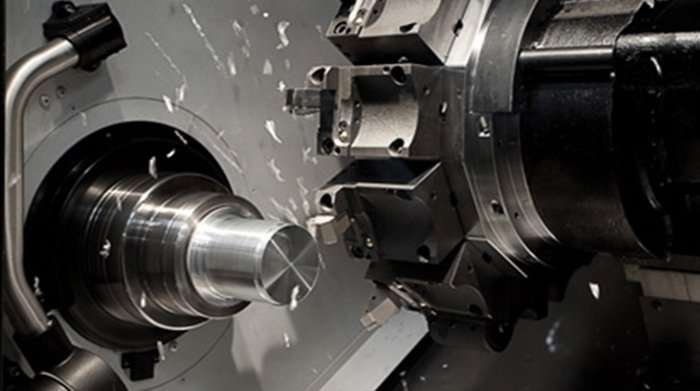
Applications of CNC Turning
We have reiterated that turning operations are suitable for creating rounded structures, which help make parts for various industrial applications.
Below, we will list some of the applications of CNC turning.
- Round shafts and couplings: CNC lathes are suitable for fabricating shafts with rounded profiles, including couplings that serve as shaft connectors, which benefit the aerospace and automotive industries.
- Rollers: CNC turning is ideal for creating rollers, including those with strict tolerance specifications for industrial manufacturing.
- Turbines: CNC turning operation aids in the creation of turbine blades for energy and power generation.
- Hydraulic cylinders: Turning is ideal for creating hydraulic cylinders and pistons for various mechanical and hydraulic gadgets.
- Ball joints: CNC turners suit the manufacturing of rounded connective devices like ball joints in vehicle suspension systems for easy movement and flexibility.
- Nozzles: They are typically round, sembling cones or cylinders. Therefore, CNC turning is suitable for manufacturing nozzles for jet engines, spray systems, and fluid processing for various manufacturing industries.
- Flanges: used for strengthening beams, pipes, and other structural elements.
- Medical components: CNC turners benefit the manufacture of medical parts and implants such as bone screws and connectors.
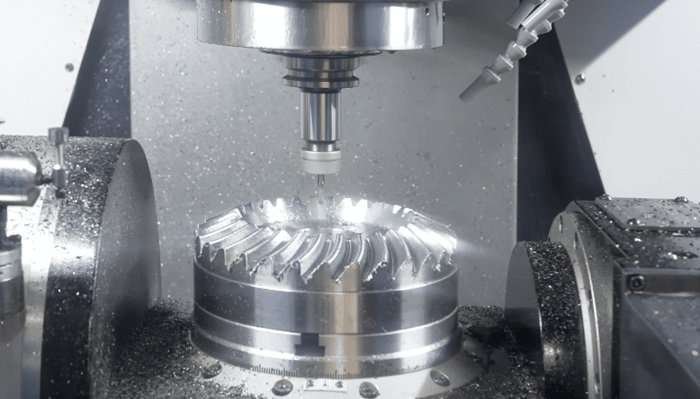
Applications of CNC Milling
Below is an overview of parts manufactured by CNC milling, including the industries they benefit.
- Engine parts for the aerospace and automotive industry.
- Gears and transmission systems for the automotive and mechanical industry. This includes both straight and spiral gears.
- Fabricating molds and tools for injection molding, die casting, and other rapid prototyping methods.
- Enclosures and housings for electrical components.
- Plumbing and automotive fittings that serve as connectors for various components
- High-precision engine parts, such as cylinder blocks and heads, for the automotive industry.
- Healthcare and medical devices, such as implants and surgical instruments, include casing and housings for medical gadgets.
How Do You Choose Between CNC Turning and Milling?
We have already established that both machining operations suit vast industrial applications. However, we also discussed that they yield different structures and shapes. Therefore, you must understand when to use either turning or milling for your project.
Geometric Shape and Complexity
The shape and geometry of the part you fabricate are the first things to consider. We have reiterated in this article that CNC turning is for creating rounded structures and parts. On the other hand, milling is a more versatile process for creating intricate designs, whether flat, irregular, or multi-dimensional.
Surface Finish Requirements
Before deciding on the proper machining method between CNC turning vs milling, factor in the surface finishing specification, especially if either process suits your intended fabrication. Turning is the best choice if the fabrication calls for a smooth finish or a round surface. However, milling operations are appropriate if the specification requires detailing with a textured finish, especially for flat or irregular surfaces.

Different Features and Detailing
Sometimes, a project may require combining CNC turning and milling services to meet all requirements. For instance, manufacturing a cylindrical component with some intricate features and unconventional detailing requires milling after creating the base cylindrical shape. The example above showcases the use of the CNC milling process after turning. However, some projects may require milling before turning.
Therefore, a good way to do this is to use an integrated CNC device for mill-turn machining when working on this project. CNC milling-turning centers are sophisticated machines capable of milling and turning operations into a single machine.
However, they are significantly more expensive than acquiring a single CNC milling or turning machine. Therefore, when unsure of the best machining service for your project, don’t hesitate to contact an expert for guidance.
XinCheng is Your Expert for CNC Turning and CNC Milling Services
Understanding the specific machining service is critical for the success of your project. You must partner with an expert service provider to guarantee a better result. XinCheng offers one-stop and professional CNC turning and CNC milling services. We are reliable partners to meet all your machining requirements. We guarantee quality production at competitive pricing, regardless of strict tolerance and precision specifications. Just contact us and get a free quote!
Schlussfolgerung
While there is significant overlap between mill-turn machining operations, we already established that they are two different processes. CNC turning yields rounded products, usually in conical or cylindrical forms, while milling creates shapes of all forms. However, even though they are different, some fabrication may require integrating both techniques.
FAQs
Which is better: a CNC lathe or a CNC mill?
A CNC lathe is typically used for CNC turning operations. Therefore, CNC lathes create rounded components – cylindrical and conical. On the other hand, CNC milling machines are used for milling services, creating flat, regular, irregular, and complex shapes. That said, the two devices serve different purposes, and the better choice depends on your manufacturing needs. However, milling centers have a more extensive versatility.
What is the difference between mill-turn and turn-mill?
There’s no difference between mill-turn and turn-mill CNC machines. The phrase refers to a hybrid CNC machine that combines the operations of turning and milling centers into a single device. That said, whether it is called a mill-turn or turn-mill CNC machine depends on the location or specific machine model.
What is the difference between CNC milling and cutting?
CNC milling is a machining operation involving rotating cutting tools and chipping pieces off a workpiece. However, cutting is a more extensive term that includes various machining and subtractive manufacturing processes. Therefore, cutting is a superset, with CNC milling being a subset of cutting.

